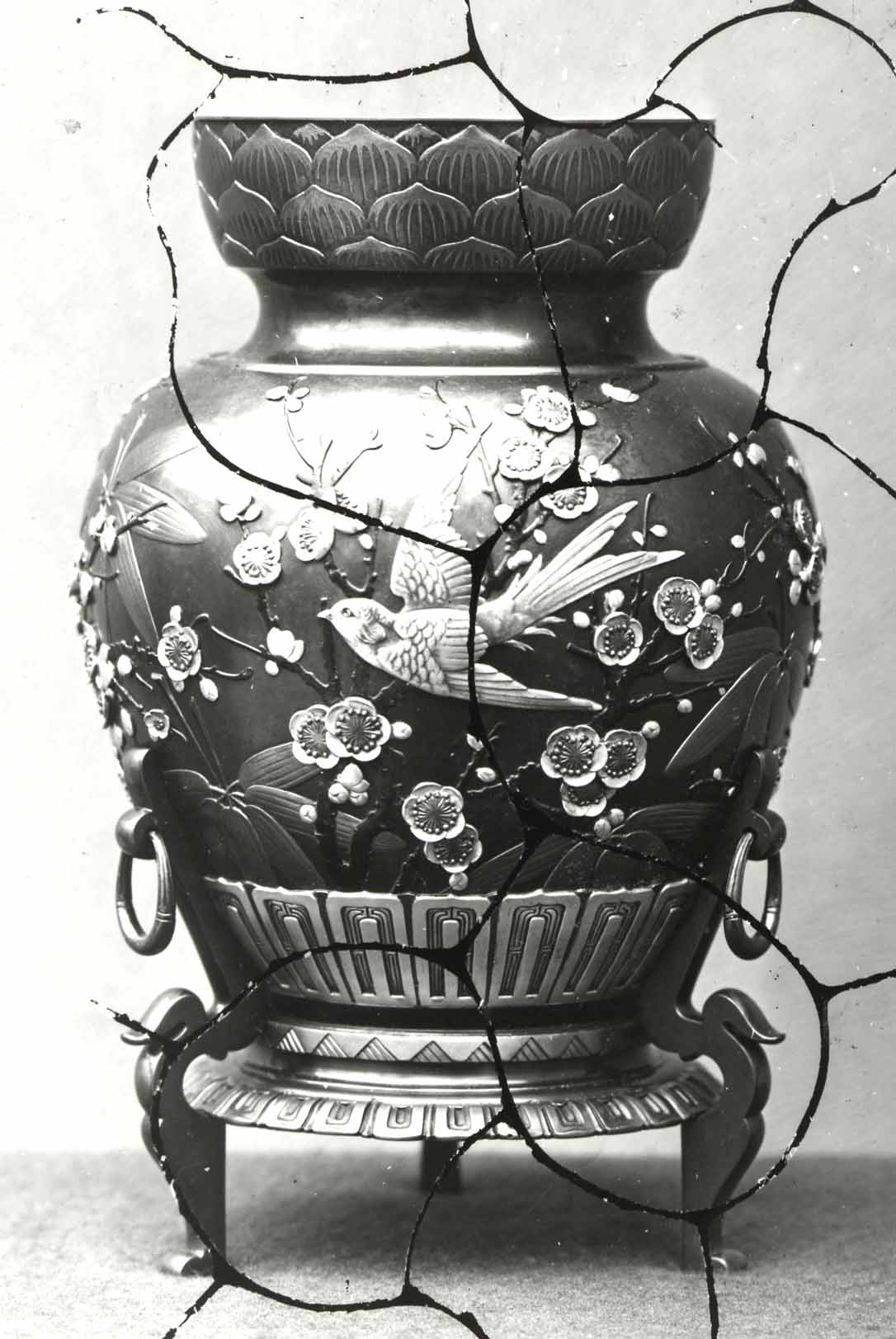Each vase: 8 ¾ in (22 cm) high
Exhibited
The Great Centennial Exhibition, Philadelphia, 1876 International Fair, Paris, 1878
Literature
Christofle & Cie. Catalogue des objets exposés Exposition universelle 1878
In the West, contact with quality Asian works of art had a direct impact on attitudes to the design and decoration. Designers and makers studied the forms and techniques and began to produce goods using the stylised vocabulary and balanced asymmetry of the Far East. The Western hunger for this taste is evident in a range of products, such as the present vases, where romantic motifs and naturalism combine with a mélange of styles to create an impression, rather than an accurate reproduction.
On the present vases, galvanoplastie, an innovative production technique developed by Christofle, is used with great success to create an intense decorative effect. The technique uses variegated patinas encrusted with layers of gold and silver that are painstakingly electroplated on the chased bronze surfaces. Discovered as early as 1836 by a Russian scientist called Jacobi, galvanoplastie was perfected for artistic use by the Christofle workshops, in particular by Charles Christofle’s nephew, Henri Bouilhet. At the 1855 Paris Exposition Universelle, galvanoplastie was celebrated for its well-conceived application of industry to design. The present vases were technically difficult to make and were expensive even then, which resulted in their rarity.
Although the present vases epitomise the marriage between Japanese style and innovative 19th-century production techniques, their chic appeal transcends that era of opulence. They were designed by Emile-Auguste Reiber (d.1893) who, as chief designer at Christofle, was particularly inspired by the arts of Japan. Reiber emulated Japanese production techniques while adapting designs to produce stunning works that satisfied the burgeoning vogue for the exotic. His much lauded creations were used by leading artisans of the time including Theodore Deck and the ébéniste Jean-Michel Grohé. At the 1873 exhibition in Vienna, which was billed as a ‘meeting of East and West’, Christofle exhibited a Chinese style enamelled vase designed by Reiber that received high accolades. In 1877, he published Le premier volume des Albums-Reiber, a volume of 40 design prints concentrating on Japanese objects by Cernuschi, Bing and Maron in Yokohama. Today his designs for enamelled works, clocks, and candelabras are preserved at the Musée Bouilhet-Christofle, and Musée d’Orsay, the Metropolitan Museum of Art, and the Victoria and Albert Museum.


















